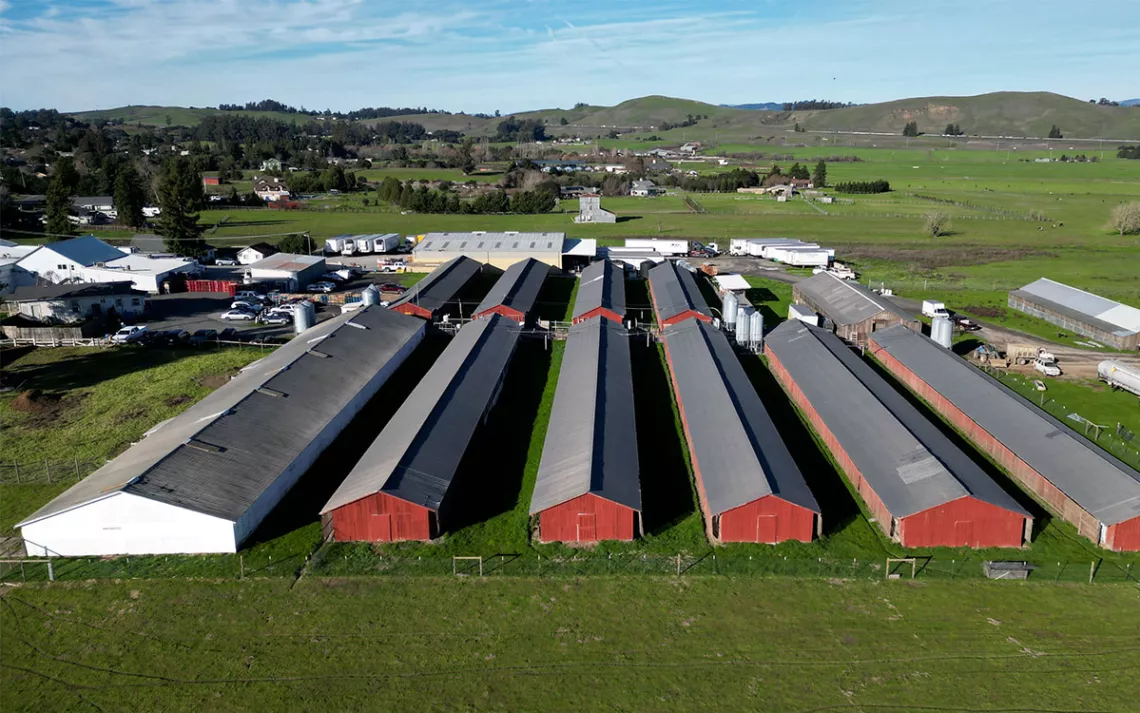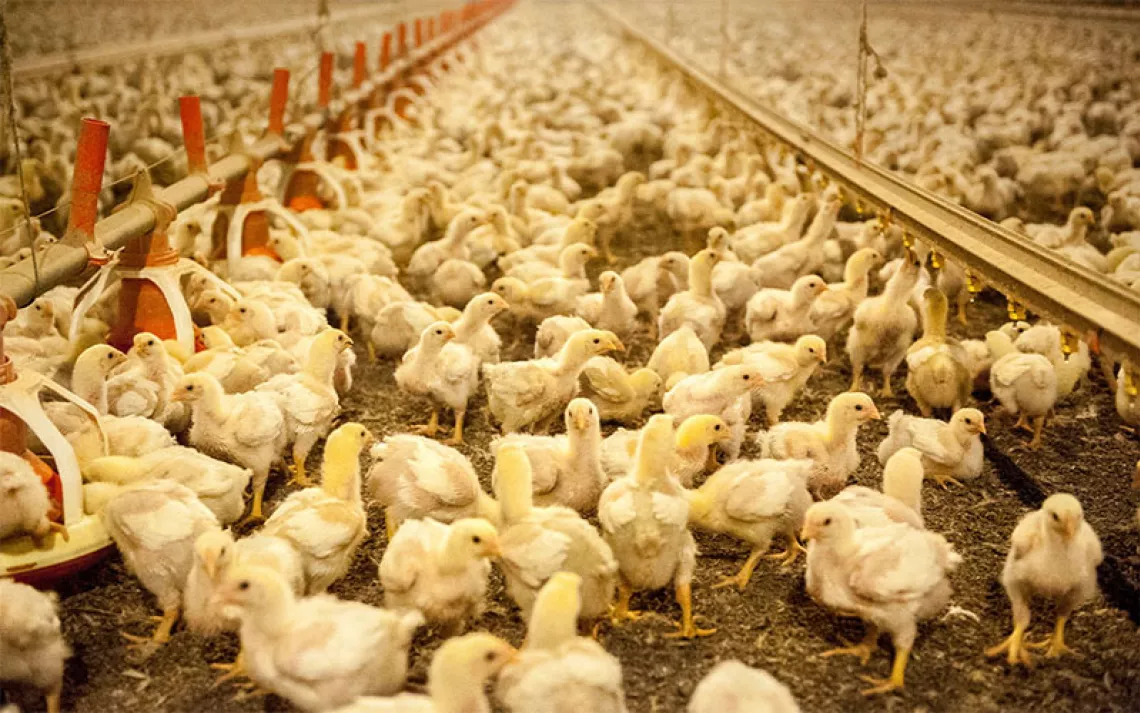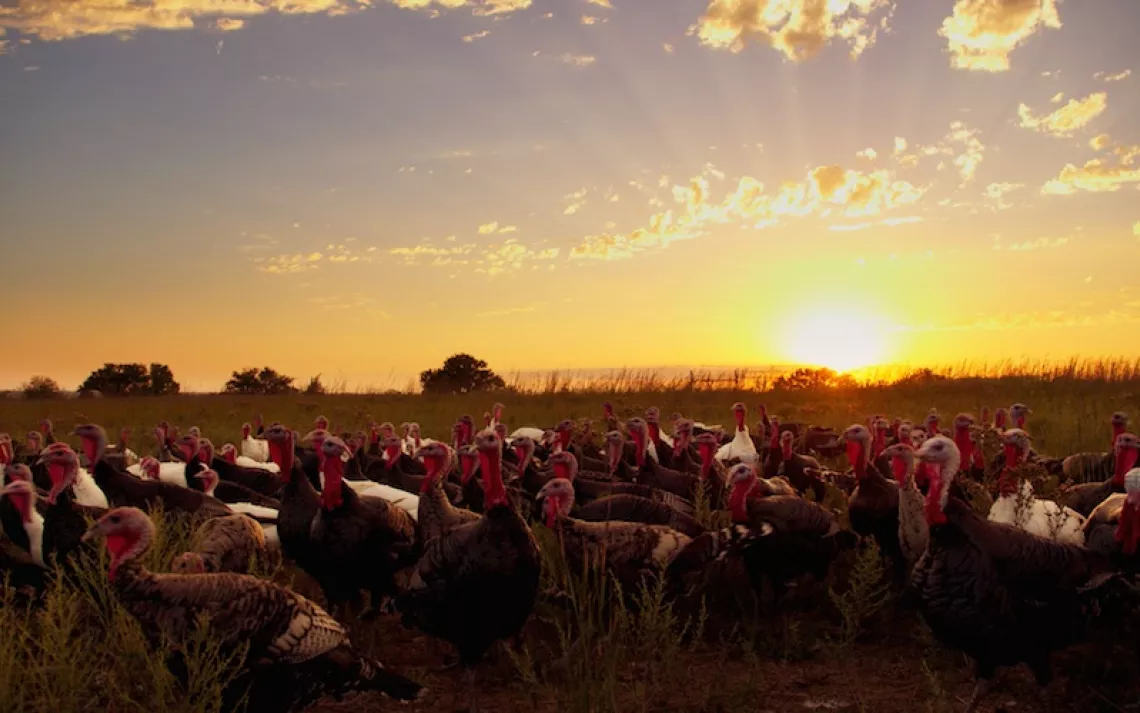Mega-Dairy CAFOs Tout Methane Digesters to Green Their Image
In Oregon and California, CAFO operations compromise life and health in frontline communities

Photo by Terry Chea/AP
In 2022, officials in Oregon’s Morrow County declared a state of emergency. The announcement was not in response to a sudden event like a wildfire, earthquake, or flood. Yet it was something just as grave: Their water was dangerously polluted.
For three decades, agricultural and industrial runoff has contaminated groundwater in the Lower Umatilla Basin of the state. Last summer, canvassers for the Oregon Health Authority went door to door, testing residents’ well water to see just how bad the situation had become.
“Right off the bat, it was pretty clear that the problem was really severe,” says Kaleb Lay, community organizer at Oregon Rural Action. Forty percent of the wells tested showed concentrations of nitrates above the level deemed safe by the US EPA. The link between high nitrate levels and several diseases is well-established; some newer studies suggest that even very low nitrate levels may heighten the risk of certain cancers. “You can’t throw a rock in the city of Boardman without finding someone who has cancer or a miscarriage,” says Lay. “The trick is there's no straightforward test a doctor can use to connect an individual's health condition to nitrates."
The Umatilla Basin is one of the state’s most important agricultural regions, home to cattle feedlots, large-scale farms, and several “mega-dairies.” The largest, Threemile Canyon Farms, hosts 70,000 Jersey cows across 93,000 acres of land. In 2019, the operation installed digesters to capture methane from enormous, liquefied manure lagoons and began selling credits for low-carbon-intensive fuel in California. In 2020, Threemile earned a national sustainability award from the Innovation Center for US Dairy for its “closed-loop” system. Not long afterward, the state’s Department of Environmental Quality fined the operation for exceeding emission limits for fine particulate matter.
“Threemile is a great example of what the future holds, marrying our energy system to this factory farm model of production,” says Tyler Lobdell, staff attorney for Food & Water Watch, which regularly calls out greenwashing around factory farming.
Livestock operations have been harvesting methane for over 20 years, but until recently, the gas was used mostly to generate heat and electricity for the farms themselves. Now, state and federal incentives are prompting a rapid build-out of digesters across the country so they can generate “renewable natural gas.” According to the US EPA, 290 dairy digesters were online as of January 2023. Though these operations are promoted as a climate change solution, they hog enormous volumes of water and create noise, odors, dust, and air and water pollution in the communities that host them. They’re also feeding consolidation, making it harder for smaller dairies, including those with truly sustainable practices, to survive.
As reported in High Country News, mega-dairies in Arizona are sucking up so much groundwater that residential wells are going dry, and in Minnesota, huge operations are driving small dairies out of business. In the dairy capital of Wisconsin, where mega-dairies have rapidly displaced smaller operations, nitrates and E. coli have contaminated drinking water wells. Just last month, a Wisconsin court ruled against dairy industry interests in a suit that would have undermined a state water protection program that regulates animal waste.
California’s Low Carbon Fuel Standard (LCFS) is driving the manure gold rush. Though it’s a state program, any producer that sells transportation fuel in California can participate. The state assigns every transportation fuel a carbon intensity score, which is a measure of the greenhouse gas emissions created per unit of fuel. High-carbon fossil fuels earn scores close to 100; solar-powered electricity has a score of zero. Every producer must stay below the state’s carbon-intensity target, which gets lower every year. To meet the threshold, producers of high-carbon fuels can buy credits for low-carbon fuels on the open market.
Biogas products from dairy digesters typically earn negative scores, some as low as -790. Producers are allowed to account for the emissions avoided by capturing the methane—a potent greenhouse gas—instead of releasing it into the atmosphere. “Because of that extreme negative carbon intensity, it creates this perverse incentive structure that makes it the most lucrative fuel on the market,” says Lobdell. These operations do nothing to address methane released through enteric fermentation—i.e., the gas released when cows burp—and a new analysis by Food & Water Watch shows that digesters leak substantial amounts of methane.
Nevertheless, California has turned to dairy biogas to help meet its ambitious carbon-reduction targets. The state’s Department of Agriculture offers grants that cover up to half of the (substantial) cost of building out digesters. Once they’re up and running, operations can sell credits through California’s LCFS market and the federal Renewable Fuel Standard program simultaneously. The California Department of Food and Agriculture has funded 140 anaerobic digester projects within the state, and a new report from the Center for Food Safety shows that the cost to taxpayers is much higher than state regulators claim.
“It’s been set up so these corporations are getting rich in the name of green tech and benefitting from taxpayer subsidies,” says Kendra Kimbirauskas, an Oregon farmer and senior director for Agriculture & Food Systems at State Innovation Exchange.
Mega-dairies are also grabbing grants for their “waste management practices” through EQIP, a popular conservation program, when that funding could be directed toward regenerative practices like stream buffers and grazing management that are accessible to a wider range of producers. Some federal lawmakers are pushing back. In February, Senator Cory Booker and over a dozen Senate and House colleagues urged the USDA to remove “industrial-agriculture-centric practices” from those eligible for funding under EQIP and another key conservation program.
The rush has also compromised the LCFS by taking attention away from true low-carbon alternatives, says Lobdell. “The LCFS could be incentivizing zero-emission vehicles to the max degree, but because of this development, it’s not,” he explains. Not surprisingly, fossil fuel companies are jumping into the game. Chevron has partnered with Brightmark to construct methane digesters in western Michigan and Florida, and with CalBio to build out digesters in California.
Food & Water Watch reports that in Oregon, the number of cows at the state’s mega-dairies increased by 60 percent from 2002 to 2022. During that same period, half of Oregon’s small dairies disappeared. Aaron Smith, a UC Davis professor who blogs about energy, notes a similar trend in California, as operations with more than 2,500 cows have swelled while small farms dwindle. Now, more than 90 percent of California’s herd is concentrated in the San Joaquin Valley, which is plagued with the second-worst air quality in the country, thanks to the combination of agriculture, oil drilling, heavy traffic on highway corridors, and the region’s topography, which creates an inversion layer that traps pollutants in the valley.
Oregon’s Umatilla Basin is one of the most ethnically diverse region in the state. Local government has long cozied up to industry, paving the way for development (and the resulting tax dollars), while residents remain largely shut out of the process. Now, these same residents, whose lives and livelihoods are inextricably tied to agriculture, feel betrayed, says Lay. “Not only has it decimated people’s health and their trust in government, it has also decimated their generational wealth.” Lay helps organize public meetings for residents with contaminated groundwater wells. Property values have plummeted, and parents urge their kids to flee once they graduate from high school.
Last year, after years of advocacy, Oregon’s governor signed a bill that requires new large livestock operations to submit water use plans and allows local jurisdictions to impose setbacks. The legislation was first proposed in 2019 after the state shut down a mega-dairy called Lost Valley Farm in the Umatilla Basin that had racked up over 2,000 environmental violations. The operation left behind 30 million gallons of manure when it sold.
Though the final bill was watered down—farming and environmental advocates wanted a moratorium on all new operations with over 2,500 animals—the new legislation makes it hard, if not impossible, for new mega-dairies to set up shop in regions compromised with nitrate pollution. It also effectively shuts down a proposal for an enormous chicken farm near Kimbirauskas’s farm in Linn County, Oregon.
She credits a coalition of farmers and environmentalists from across the political spectrum for helping get the legislation passed. “All of these operations have emissions problems,” says Kimbirauskas. “These are gases that at best smell bad and at worst may kill you. The larger the operation, the larger the threat to workers and those who have to deal with acute exposure.”
 The Magazine of The Sierra Club
The Magazine of The Sierra Club



